This is a slightly edited version of a story I did last year in July about a friend of mine. Juan didn’t go back to Baja after all past Christmas. He told me it would be too difficult to return here and he has few people left in Santa Rosalia now. He’d like to go back before he dies, though. That’s what he told me.
I haven’t seen Juan for almost four months – the longest it’s been since I met him years ago. When the weather gets cold here in Seattle, perhaps he will knock on my door.
Juan, I have more work for you, and a pot of coffee to brew.
There is a town by the name of Santa Rosalia on the Sea of Cortez, in Baja California. When you hear a Santa Rosalia native say the name, the word “Rosalia” has the most lyrical and lovely sound, and you imagine the town as a woman, dark hair captured at the nape of a long and elegant neck, red rose behind the ear, smoky eyes. A sultry rolling “R”, a slightly flat “O”, and softer “S” – “Rosalia”.
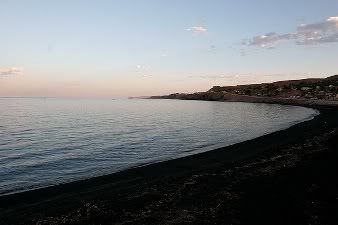 |
A story below the fold… |
It is a salt water town with a most unique history. In the United States we often ignore our own past and the building of this country by immigrants who were unwelcome but instrumental in erecting the industrial foundation of our economy in the 1800’s – the Irish, the Chinese, the Scandinavians; add just about any other nationality to the mix and you’d have the right of it. Santa Rosalia echoes a similar melting pot past to our own United States history.
The town of Santa Rosalia was the site of a gold and copper rush in the 1860’s, a time when the occupation of Mexico by France and the governance of Emperor Maximilien was on the decline, but French business interests still sought wealth in an untamed country far across the sea from Mother France.
Copper was discovered, and then gold, and soon the mines began. Terrible, dirty mines constructed by a French company and operated with virtual slave labor. Yaqui Indian prisoners by the thousands were forced to work in the Santa Rosalia mines in the late 1880’s to the early 1900’s. The Yaquis are an indigenous population, and were severely persecuted by the Mexican dictator, Porforio Diaz, for over thirty years. After resisting conquerors from the Aztecs to the Conquistadores, Yaquis were inevitably the target of a mass ethnic cleansing campaign by the Mexican government, decades after our own United States fought the last military-centered “Indian wars”.
In addition, Chinese and Japanese laborers were brought over to work in the mines and on railway lines that would support the mining industry. With a promise that there would be land to grow rice on, thousands came to Baja. It only took a few years for this importation to fail, as the new workers discovered Baja was no place to grow their staple food. But a few residual Chinese and Japanese settled around the Sea of Cortez. Santa Rosalia was a company town in the worst sense and in one two year period between 1901 and 1903, over 1400 miners died from blood and lung diseases due to the pollution emitted from the copper smelter and the dust in the mines where there was no aeration.
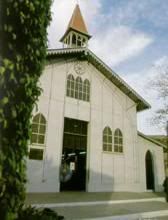 |
Santa Rosalia has a steel church (purportedly) designed by Gustave Eiffel. From photographs, it appears a rather simple structure, as perhaps it would, since its mere existence is due to pre-fabrication. The church of Santa Barbara, Patron Saint of Miners, was transported across the ocean from Europe and then reassembled in Santa Rosalia. I use “purported”, as there is some debate on whether Eiffel was the architect or if the church of Santa Barbara de Santa Rosalia was actually designed by Bibiano Duclos, a Brazilian trained in France. Either way, the church is one of several architectural phenomena in this town on the Sea of Cortez. In Santa Rosalia, wooden houses with expansive porches and second floor balconies face onto the streets, much like the structures in New Orleans French Quarter. When the French came into Santa Rosalia in the 19th century, they remade the village with a European flavor and redesigned dirt roads into grid-like streets and avenues.
The Sea of Cortez, where Santa Rosalia is located, is a place I’ve always longed to see, thanks to John Steinbeck. Steinbeck’s The Log from the Sea of Cortez is a tale I read many years ago in the few months I scraped by on miminum wage near Cannery Row in Monterey in the early, early eighties. The Log from the Sea of Cortez evokes something, I don’t know what, maybe a memory of what you think you should know, or a place you’ve always longed for and never seen. A mind can make false memories like that. Creatures exist there on the islands that are found nowhere else in the world. It is a kind of Galapagos, lost now that so much of the ecology of just a few decades ago has been pillaged or destroyed by the commerce of both sport fishing and man’s idle wastefulness.
There are still wonders there. There is a crab, called the “Sally Lightfoot Crab” and where else could you find a creature with such a name? Steinbeck wrote the following in his Log:
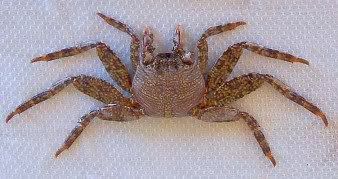 |
“They seem to be able to run in all four directions; but more than this, perhaps because of their rapid reaction time they appear to read the mind of their hunter. Man reacts peculiarly but consistently in his relationship with Sally Lightfoot. His tendency eventually is to scream curses, to hurl himself at them, and to come up foaming with rage bruises all over his chest.” |
A bit of a Darwin meets Gilligan read; lighter Steinbeck for the most part, humorous, adventurous and finally, sad, and all at the same time.
These are words, too, that I’d use to describe my friend Juan. I’ve known Juan for about ten years now. Initially, Juan worked as a kind of a handyman and also did yard work for my now ex-husband. He worked for us for the brief time my husband and I shared life together, and Juan continues to work for us both separately now. Over the years, he’s done painting, clean-up, yard work, debris removal, and performed the moving and organizing of the detritus of my life.
We have a curious interaction. My life has certainly changed in the last four-five years and I am no longer “flush”, now that the technology boom and the Clinton years are part of my past. But there is still work to be done. Juan has no phone and no consistent address. He gives a call about every two weeks, usually from Casa Latina in downtown Seattle or El Centro de la Raza on Beacon Hill, to see if I need this or that job done.
When one is a single woman, it’s hard to admit that there are times when a stronger pair of hands or a stronger back is necessary, and in my case, it’s doubly difficult, given that I used to lift weights and grew up thinking I could do anything. As the years have moved on, so has my pride, and pernicious anemia defeats my energy. Juan’s strong back has become something that I count on to assist me with moving furniture or making runs to the local dump. I don’t think Juan understands how much I value his assistance during these chores, but it is truly a gift to me that there is someone in my life who is willing to help out without questioning why I need something moved somewhere or if something has to be done that day at that time, when I want it done. So what if he is paid for it? Payment doesn’t always guarantee willingness. Juan always shows up ready and willing to work.
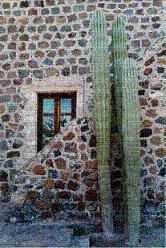
He is from Santa Rosalia, on the Sea of Cortez, on the Baja Peninsula. Juan’s own ethnic origins are as unique as the foundations of Santa Rosalia. Juan is a quarter Chinese, a quarter Indian, along with half Spanish-Mexican ancestry. He has a mahogany complexion, high cheekbones and straight, thick black hair, all echoes of his Indian and Chinese ancestry. Juan and I were born in the same year, but he’s traveled so many more places and lived so many more lives, by his own account, than I ever could.
His stories are part of his charm. Juan has casually dropped “big fish” tales of when he used to help charter fishermen on the Sea of Cortez as they fought marlin and swordfish, talked of his time playing futbol for a semi-professional team in Mexico City, related the story of a bar fight in Guatemala where he stood next to a man who was stabbed in the back at a bar and how he wound up with the murderer’s knife in his hand and that is why he left Guatemala. Episodes in Nicaragua fighting with rebels. Leaving Ecuador with another man’s girlfriend. Witness to a shooting in Juarez. Shortstop on a farm team in Costa Rica.
I’ve seen Juan walk into my yard on a Saturday morning, with a black eye from the night before, teeth knocked out, the casualty of too much earned money in his pocket the previous day. A bottle of Johnnie Walker Black Label was used as a weapon rather than as the container of whiskey it was meant to be. Whiskey and spicy food are his medicines of choice on days when his sinuses are congested and in Seattle in the winter, that can be so many days. Seattle is the runny nose capital of the world for those from warmer climates.
During the years of my previous marriage, my husband and I had a small old pan abode cabin out on Tiger Mountain and there was a very plain and ugly, but clean, 1960’s ranch-style house on the property. In the summer, Juan would come out there and live during the week and do land-clearing for my husband. There were nights that I could smell the best stews and grilled food emanating from that house. There was a kind of Mexican seafood cioppini, with red and green peppers, chilies and tomatoes, carrots, onions, garlic, shrimp, scallops, chili powder, cumin and oregano. My nose could separate each lovely aroma wafting out of that house and into the country air of Tiger Mountain. Growing up on the sea coast of Baja gave Juan the skills of a master chef. Other nights after payday, he’d often buy a steak or two and grill them up, and I suspect, if there were two steaks, he’d eat both of them… Juan is around 6 feet tall and if he weighs 150 lbs, I’d be surprised; but, boy, can he eat.
Juan’s power to weight ratio is amazing. He’s often mentioned working in the copper mines from the time he was 14, and I know his father worked all his life in the mines, and died from lung cancer just a couple of years ago. Most histories on the web of the copper mines from the El Boleo company indicate that the mine closed down for good in 1985, so it’s possible that Juan worked there, even as a teenager. There’s little other economy in that area of Baja, unless you work the tourist industry or fish. I suspect that the closing of the mine and the subsequent downturn in employment is what sent Juan out of Santa Rosalia. I once saw Juan lift a slab of concrete four inches thick and four feet by four feet wide using only the leverage of a crowbar and his back. To me, an astounding feat, given that he has the build of a lanky marathon runner. It makes sense that such strength has come from swinging a pick-axe inside a dark hole in a mountain.
 |
He’s told me about Mexico City, where his ex-wife lives and where there are so many people and so much corruption. He’s talked about parts of Colombia which he said he’s hitch-hiked to and I never know completely what to believe, as each time he tells a story, there’s a wonderful embellishment that grows the story beyond its original recitation. That can be the beauty of storytelling, right?
He has two sons who are in their twenties now. One is somewhere in East L.A. and living with Juan’s uncle. The other apparently works in computers in Mexico City. These two are sons that Juan has not seen since a couple of years before he came to the States in 1990. He never saw his sons grow up and he’s never known them as adults. Juan has a wandering spirit and I can imagine that life tied to one spot and the physical weight of responsibility from a family was simply too much for him. He stays in touch somehow, though. I know that a good portion of the money he earns, he sends to one of his sisters and her children, now living in his parent’s house in Santa Rosalia. Juan’s mother died around four years ago, and he has only a brother and a sister left out of six siblings.
In the summer months, Juan sleeps outside in the “jungle”, and when that gets too crowded or dangerous or overly policed, he moves to Interlaken Park on North Capitol Hill. It’s a crazy and transient life, but I know he’s tried several times to share apartments or houses with other workers, but inevitably, the tensions run too high among so many single, Latino men, and fights break out over women or liquor or money, and things get too hot and Juan moves back to the outdoors, where he doesn’t have to compromise on his peace and quiet. This is what he tells me. The only belongings he maintains are an old battery operated TV, a sleeping bag, a change of clothes (which are always clean), a few toiletries, and some Spanish language dime novels. When living in the “jungle” or the park, he carefully buries these few belongings in a plastic tarp, well hidden from prying eyes and park police. Long, long ago he lost his identity cards, but somehow he makes due.
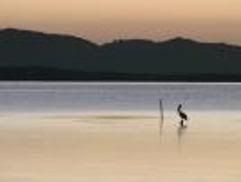
I trust Juan with my home and around my kids and have never had reason to doubt that trust, even when my trust in others has failed for lesser reasons. He can never remember the kids’ names and they are all “chica” or “girl” or “honey”. In all the years I’ve known him, my door has been unlocked to Juan, and he knows that if he needs money he can call me for work. I’ve been down to my last ten dollars and I’ve given him half. When I’ve had no money, I share the contents of my cupboards and freezer with him.
My Spanish is extremely limited (to about twenty words) and his English is poor. It can be comical sometimes, because I’ll ask him to do something a certain way, and he’ll nod his head with authority. I’ll think he understands and then I return a couple of hours later and find that the tree I wanted lightly trimmed has been cut to within 6 inches of the ground. My English, even for native English speakers, is often too fast and I forget this sometimes when I speak with him. He speaks to me rapidly in Spanish sometimes and forgets that I don’t speak it well enough to understand at all. Most of the time, however, our common communication and results are more successful.
Juan is going back to Baja in December, for the first time since he left some twenty years ago. I’ve asked him what he thinks to find there. He tells me maybe work, maybe nothing. He’s lonely for the blueness of the sea and he thinks of Santa Rosalia, at least the Santa Rosalia he remembers. He wants to see his sister, to see where his mother and father are now buried. He wants to go home for awhile. I think I’ll never see him again. He insists he will return in six months, but I’m not so sure. I don’t think he knows how hard now it is to get into the States. I tell him, “Well, you’ll always have my phone number, Juan, so call.”
I have not found many people in my life who always work hard, have honest eyes, but can always tell a good story.
 |
“Home is the place where, when you have to go there, They have to take you in.” Robert Frost |

16 comments
Skip to comment form
Author
For a front page post? Tell me…
Author
if so, where?
It’s kind of a sideways dream of mine to buy a decent old VW bus (pre-1980, but post-1970), put in a 2000cc engine, and drive it down the Baja penisula. Kind of like Little Miss Sunshine, but without the family. And with a door that works.
I’ve had three VW buses in my life; along with the John Muir VW repair book, my other traveling necessities were a spool of wire, a metric set, and a roll of duct tape.